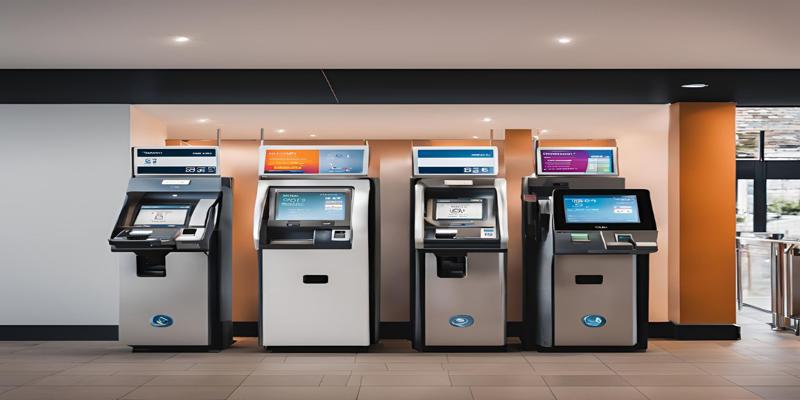Real-time payments: the future of payments
Dec 02, 2024 By Sid Leonard
In today's fast-paced digital world, everything is expected to be instantaneousspeed and convenience reign supreme, from the latest entertainment streaming to same-day deliveries. Yet, you may still find yourself waiting days for those payments to clear in financial transactions.
What Are Instant Payments?
Instant, real-time, and immediate payments are the new finance wave. In an instant payment, money moves between bank accounts almost instantly and is available 365 days a year, every day of the week, and throughout holidays.
Benefits of Instant Payments for Consumers

Immediate Financial Control
Instant payment systems grant consumer unparalleled control over their finances. In real-time transactions, one can manage their money better by making bill payments at the last minute or urgent purchases without waiting. Such immediacy does away with anxiety over waiting for one's funds to clear. Hence, your account balance will always be up-to-date and exact.
Enhanced Convenience and Flexibility
Convenience comes with exact instant payments. You can easily send money to your friends, loved ones or business any time of the day or night at any time of the year no holidays, no processing time! Its indispensable when time is of the essence as in splitting a dinner bill or paying for emergency service.
Improved Security and Fraud Prevention
Instant payments are very secure, and they often use advanced security features. Real-time processing would support real-time verification, reducing the tendency for fraud. You can track and report unlawful transactions so your money doesnt get delivered into the wrong hands. It will give you more peace of mind and more security.
Cost-Effective International Transfers
Further, for money senders, instant payment systems could be a less expensive means of sending money than executing traditional wire transfers. Such systems may reduce the time to process payments and cut out some intermediary banks, allowing for reduced fees and better foreign exchange rates to enable international consumer transactions.
Benefits of Instant Payments for Businesses
Improved Cash Flow Management
Instant payments ensure significant business benefits by optimizing cash flow. They guarantee the immediate availability of money for companies, reducing the gap in time between sales and liquid capital. This will grant fast access to the money, make more realistic financial forecasts, and make more worthy decisions. Optimizing working capital can be done by investing in growth opportunities and dealing with unexpected expenses.
Enhanced Customer Satisfaction
In the fast-paced world, customers want speed and efficiency. Instant payment meets that need: real-time transactions are frictionless. This efficiency and convenience can increase customer satisfaction, loyalty, and positive word-of-mouth advertising. In e-commerce, the ability to process payments instantly can kill cart abandonment rates and lift conversion rates.
Reduced Processing Costs
With traditional payment methods involving many intermediaries, this increases the costs of the transaction. The process of transactions is generally smoothed in the form of instant payment systems where the number of participants is minimized, and hence, the processing costs are lower. This adds up over time and affects a businesss bottom line. On the other hand, this will also save us a lot of manual work in the processing & reconciliation part.
How Instant Payments Work
Real-Time Processing
Advanced technology allows for real-time instant payments. For example, if you make a transaction, it immediately checks an account balance and beneficiary details. Doing all this takes hardly a few seconds, so you can send funds instantly.
Secure Authentication
The security reasons for instant payment systems are robust authentication. Imagine that you need to be biometrically verifiedscanning fingerprints, containing the face, or inserting a specific PIN to avoid any transactions without your order, and so forth.
Clearing and Settlement
While traditional banking systems rely on batch processing for transactions, instant payments rely on continuous clearing and settlement mechanisms. The actual transfer of funds and their availability to the beneficiary occur in real-time and are devoid of any intermediary holding periods.
Interoperability
Most instant payment systems are interoperable across different banks and financial institutions. This simply means that one can send money with these systems to recipients regardless of where they bank. It creates a connected network in which fast financial transactions are possible.
Confirmation and Notifications
Once a payment is released from the platform, an instant confirmation is sent to both the sender and the receiver. Such real-time notifications give users peace of mind, as they can instantly verify successful transactions. Additions like these create an even better user experience for the entire digital payment ecosystem.
The Future of Payments is Instant

In the modern age of fast technology, fast financial transactions have never been more in demand. Move money around instantly as the revolution in instant payments promises a world without waiting days for your funds to clear.
Real-time transactions
Instant payment systems include quickly sending money from one account to another. However, sometimes, this takes place in seconds. Now, this is chewing processing time down to less than the blink of an eye and helping change the face of personal and business transactions. Now, its become the new standard; whether splitting dinner with your friends or a company paying its suppliers, you want to do this in real time.
Enhanced financial flexibility
The immediate payment of payments has never been so instantaneous. Better cash flow management for consumers means less risk of overdraft fees and late payment penalties. It also benefits businesses as they can have improved liquidity and working capital management without resorting to expensive short-term debt.
Conclusion
Instant payments are evolving, and their trajectory toward a mainstream reality is changing the face of financial behavior. By embracing such innovations, you and your business will put yourselves in the appropriate place to flourish in a digitized economy.








